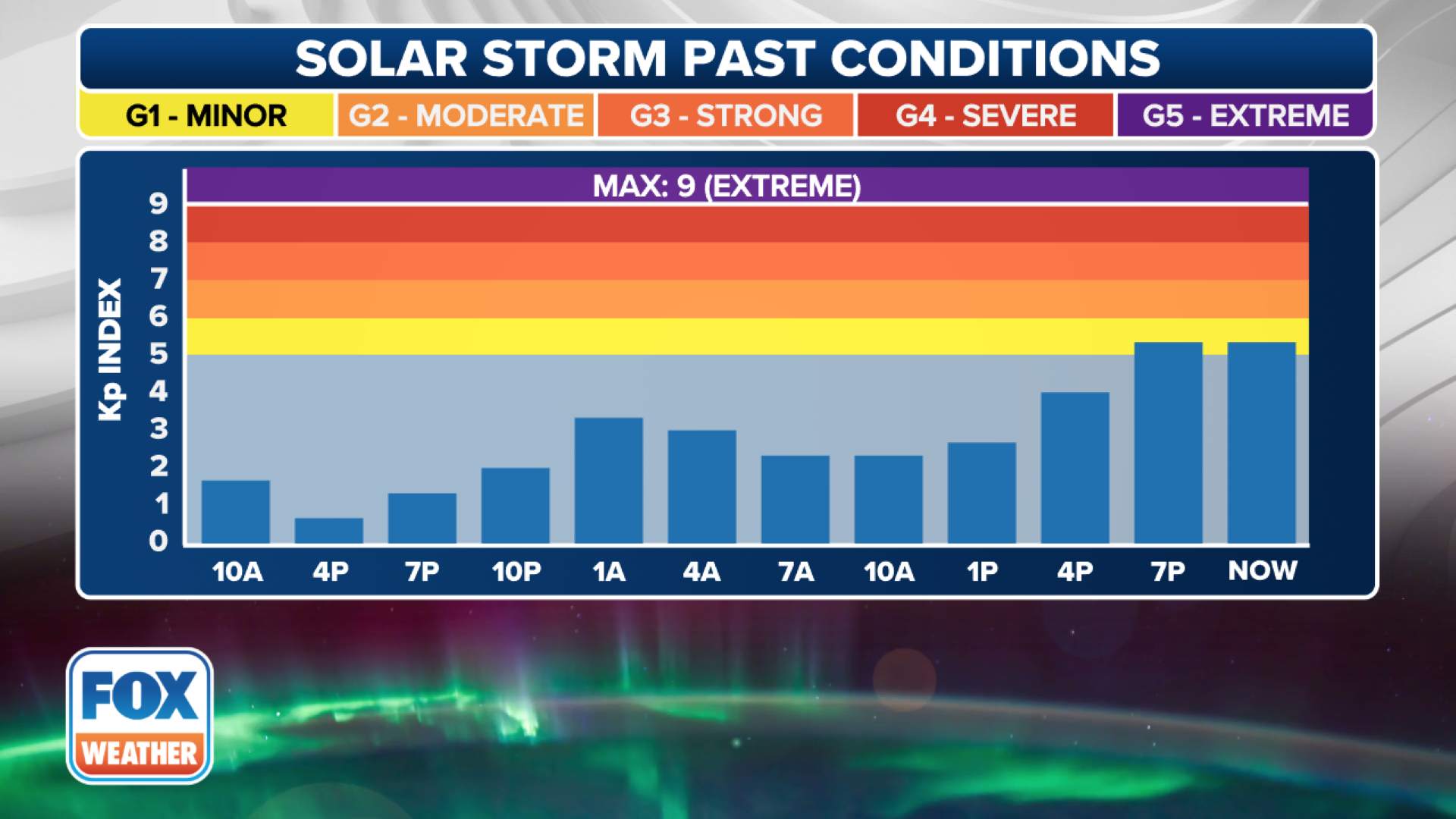Geomagnetic Storm Warning issued after strong flare erupts from Sun
Aurora lights are possible from New York to Wisconsin to Washington state on Monday. NOAA’s Space Weather Prediction Center continues to monitor for more Earth-directed components from an X1.8 solar flare sent blasting from the Sun on Saturday.
Know Your FOX Weather: Northern Lights
FOX Weather meteorologist Stephen Morgan breaks down the Northern Lights and how you can see them.
Those in the northern tier could be in for a Northern Lights show Monday night after charged particles were sent blasting from the Sun toward Earth in association with a strong solar flare.
NOAA's Space Weather Prediction Center (SWPC) said another strong X-ray flare happened on Saturday originating near the sunspot regions known as 3872 and 3873. It marks the second X-class flare since Thursday when an X3.3 flare happened from another region of the Sun. On Sunday, the SWPC issued a Geomagnetic Storm Watch after satellites detected coronal mass ejection particles heading toward Earth. That was upgraded to a Geomagnetic Storm Warning on Monday morning.
The SWPC rates solar storms on a five-level scale, with five being the most extreme and rarest space weather conditions. Moderate, level 2 out of 5, geomagnetic storming is possible on Monday.
SEE MORE: EXTREME GEOMAGNETIC STORM TRIGGERS JAW-DROPPING AURORAS AROUND THE WORLD

(FOX Weather)
When the Sun emits solar flares, solar phenomena known as coronal mass ejections send charged particles toward Earth. When these particles interact with Earth’s magnetic field, we can see displays of Northern Lights, known as the Aurora Borealis.

Aurora lights seen from Lindenhurst, New York, on Oct. 10, 2024, during a severe geomagnetic storm.
(Seth Darling)
Moderate geomagnetic storming is common and likely won’t produce anything like what we saw earlier this month when a severe storm created displays of the Northern Lights as far south as the mid-Atlantic. Still, if weather conditions permit, those from the Northeast to the Pacific Northwest could see beautiful displays of the Northern Lights.
Cloud cover might obscure the view for those in the Pacific Northwest as rounds of rain and mountain snow are forecast this week.

The aurora viewing forecast for Monday night when G2 Geomagnetic storming is forecast.
(FOX Weather)
The latest Geomagnetic Storm Watch comes after NOAA and NASA revealed the Sun reached solar maximum, a period of peak sunspot activity in its 11-year cycle. However, space weather experts say peak activity is expected to continue into 2025.
